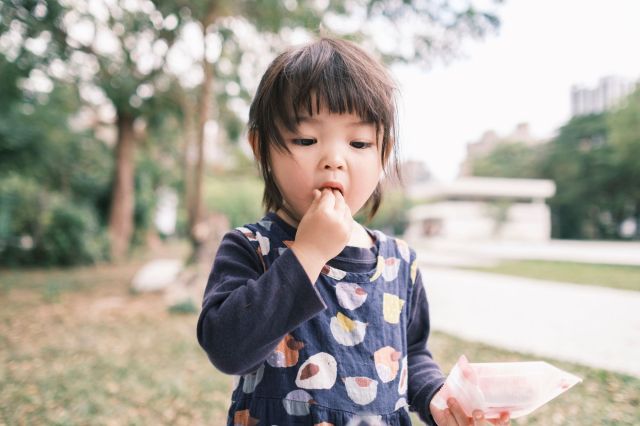My concern over my children’s health started well before birth. As soon as I found out I was pregnant, I changed my already healthy diet to an extreme version of that. So, you can bet that when they began eating solid foods, and reports like those on heavy metals found in puff snacks surfaced, it set me on a path of hyper-vigilance. It was only when I decided to take a commonsense approach and look at the bigger picture that I found a much calmer and balanced approach to feeding my family.
I don’t know many parents who have the time to sift through lengthy reports and analyze the data to find the answers to their questions. For most of us, an almost certainly exaggerated headline and a quick scan of worrying bullet points are enough to send us to our pantries, purging foods deemed unsafe.
And these reports emerge quite often, like the latest congressional report titled Baby Foods Are Tainted with Dangerous Levels of Arsenic, Lead, Cadmium, and Mercury, which warns that those metals are associated with adverse “infant neurological development and long-term brain function.” If you think that sounds terrifying at first read, we agree!
The predominant foods of concern were jarred baby foods and puff snacks containing fruits, vegetables and grains. That’s right, those conveniently packaged foods we have all probably fed our children at some point are now on many parents’ lists of foods to avoid. Of course, parents have every right, and should, do their research on topics concerning the health of their children. Though, if you’re looking to spare yourself the long read and heightened anxiety, I’m sharing some food for thought and expert advice from a nutritionist.
First, fruits, vegetables and grains make up a large part of our diets—avoiding them entirely is not possible. The same goes for those heavy metals. The truth is, they exist in the very soil that our food is grown in and the water that those plants, and we, consume. Some foods naturally have higher levels, such as root vegetables, fruit juices and yes, grain products.
Still, as a result of the rice puff frenzy, you might have noticed some grain-free alternatives popping up on grocery store shelves. But many contain substitute ingredients—such as cassava flour and meat-derived products—that are new and not fully tested, meaning they come with their own set of potential risks. So, the trick here really is all about balance.
Crystal Karges, MS, RDN and mother of five, agrees that parents are inundated with so much information around food and that looking at the overall picture is key to remaining calm among the wave of panic—a piece of advice she regularly offers to her clients. She also emphasized that “most kids are not consuming these snack foods in quantities that would raise concerns about the harmful effects of the ingredients in question because these snacks make up a relatively small part of their overall intake.”
The amount of attention we put into helping our children establish a healthy relationship with food is of greater importance than counting each potentially harmful snack they consume. Modeling a peaceful relationship with food, instead of one full of fear and uncertainty, is a great way to help our children reach this goal.
Because babies and toddlers often need subdued introductions to flavors and textures to develop a more adventurous palate, these first foods—like their beloved puffs—can play an important role in helping them feel more comfortable at eating times, Karges says. “And when your child feels more comfortable, they’re more likely to build positive associations with food and eating.” That’s why parents should focus on variety, and not just the what, but also the how, she adds.
Ultimately, creating a nutritional plan based on a wide range of healthy whole foods while remembering that the occasional store-bought cupcake at a birthday party or cupful of puffs is less harmful than the stress caused—to parents and children—by trying to avoid them is a great strategy in finding balance.
RELATED STORIES:
3 Secrets to Getting Toddlers to Eat Their Greens (Really!)
How to Talk to Toddlers about Food, According to Experts
Is This Normal? My Toddler Refuses to Eat











